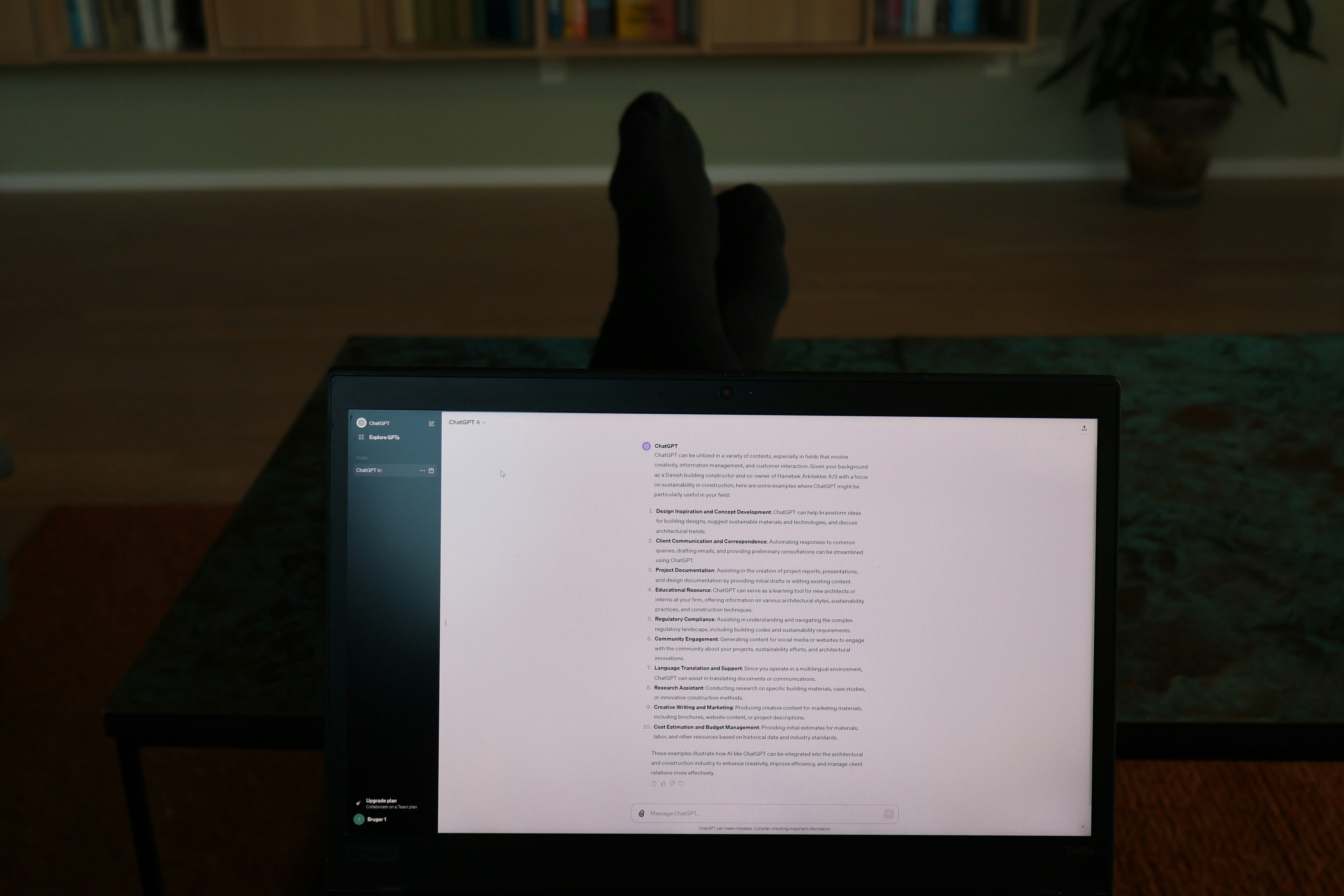< Back
A Beginners Guide to AI Writing Prompts (+15 Examples)
Declan Gessel
Jul 25, 2024
Do you need help finding inspiration for your next writing project? Think about having an AI writing assistant generating unique writing prompts at the touch of a button. AI writing prompts can be advantageous for writers looking to overcome creative blocks and enhance their writing skills. In this guide, we'll dive into an insightful beginner's guide to AI writing prompts and 15 examples to get you started on your next writing adventure.
Looking to blow past your writer's block? Jotbot's AI writing assistant could unlock your creative potential and help you excel in your writing endeavors.
Table Of Contents
What is AI Writing?

AI writing is the process of generating text using artificial intelligence. It's a technological marvel that leverages vast amounts of data to produce human-quality content. AI writing tools rapidly expand their capabilities, from crafting engaging social media posts to penning informative articles or even writing creative fiction.
These tools are sophisticated algorithms trained on a massive corpus of text data, enabling them to learn patterns, styles, and information. The result is the ability to generate text that can be informative, persuasive, creative, or any combination thereof, depending on the prompt.
At the heart of AI writing lies the prompt. This textual input serves as a blueprint, guiding the AI model in generating the desired output. The quality and specificity of a prompt directly influence the quality of the generated content. A well-crafted prompt acts as a conductor, orchestrating the AI’s abilities to produce text that aligns with the user’s intent. By understanding the nuances of prompt engineering, users can unlock the full potential of AI writing tools and deliver exceptional results.
Related Reading
• Free ChatGPT Alternative For Essays
• AI Grant Writing
• How To Use Chatgpt To Write An Essay
• AI Writing Prompt
• AI Script Writing
• How Is AI Detected In Writing
• How To Use AI For Writing
• Can ChatGPT Edit Essays
• AI Writing Tools
A Deep Dive on AI Writing Styles

Informative Writing with AI
Regarding informative writing, AI has proven to be an advance. Its formidable strength is its ability to transform complex information into easily digestible content. With its prowess in processing vast datasets to extract key points, AI is adept at presenting information logically and objectively. This makes AI an invaluable tool for creating news articles, blog posts, and instructional manuals that are not only coherent but also comprehensive. However, human intervention remains critical to uphold the accuracy and depth of analysis.
Persuasive Writing with AI
The finesse of persuasion is an art, and AI can help craft persuasive content. AI can generate compelling arguments and calls to action tailored to maximize impact by analyzing audience demographics, preferences, and behaviors. However, actual effectiveness in persuasion demands an understanding of human psychology and emotions. AI should be viewed as a supplement to human creativity, not a substitute.
Creative Writing with AI
While AI can produce creative text, it must often generate genuinely original and emotionally resonant work. Its strength lies in acting as a brainstorming tool to help writers overcome creative blocks and explore different narrative directions. In tasks like character development and plot outlining, AI can be a valuable assistant. Yet, the intricacies of human imagination and experience challenge AI to replicate fully.
Specialized Writing Styles for AI
AI's adaptability extends to a myriad of specialized writing styles:
Technical Writing
AI can generate precise technical documentation like user manuals and software guides. However, domain expertise is indispensable to ensure accuracy.
Academic Writing
AI can help summarize academic papers or formulate research questions, yet human strengths like critical thinking and original insights remain irreplaceable.
Code Generation
AI can produce basic code snippets or even complete programs. However, human programmers are vital for complex problem-solving, debugging, and ensuring code efficiency and reliability.
What Makes a Good AI Writing Prompt?

AI Writing Prompts guide AI models in generating the desired output. Here are some of the key elements that make a good AI writing prompt:
Clear and Specific Instructions
For an AI prompt to be effective, it must provide clear and specific instructions. Instead of vague requests, the prompt should outline the task precisely. This helps the AI model understand the desired outcome better. For example, instead of asking for "a story," specifying "a science fiction short story about a robot who discovers humanity" provides a clear direction.
Well-Defined Goals
Understanding the desired outcome is essential for an AI writing prompt. Is the intention to inform, persuade, entertain, or achieve something else? A clear goal helps the AI focus its output and align it with the intended purpose.
Desired Tone and Style
The tone and style significantly influence the mood and character of the text. The prompt should specify the desired atmosphere, whether formal or informal, humorous or severe. Additionally, defining the style—academic, journalistic, or conversational—further shapes the output.
Target Audience Consideration
Understanding the intended readers is crucial for effective communication in the AI writing prompt. Tailoring the prompt to resonate with the target audience's knowledge, interests, and preferences helps ensure relevance and impact.
By carefully considering these elements, one can create AI prompts that maximize the potential of AI writing tools. Remember, the more specific and detailed the prompt, the better the AI can understand and fulfill the desired outcome.
Prompt Engineering Techniques

Keyword Optimization
Keyword optimization is a critical technique in prompt engineering. Users can guide AI models towards desired outputs by strategically incorporating relevant keywords. For instance, when prompting for content about sustainable fashion, including terms like "eco-friendly," "ethical," and "sustainable" enhances the alignment with the desired subject, thus improving the focus and relevance of the AI-generated content.
Contextual Enrichment
Contextual enrichment is another vital aspect of prompt engineering. By providing background information, relevant details, or examples, users can enhance the clarity and specificity of their prompts. For example, when requesting a poem about love, specifying the type of love (romantic, platonic, familial) and the desired tone (joyful, melancholic, passionate) provides valuable context, helping the AI understand the desired direction more accurately.
Parameter Setting
Defining specific parameters is critical to controlling AI's output. By specifying word count, format, or style preferences in prompts, users can shape the generated content to meet their exact requirements. For instance, requesting a "500-word blog post in a conversational style about the benefits of meditation" clearly outlines the desired format and tone, helping AI models deliver content that meets users' expectations.
Leveraging Examples
Utilizing examples can significantly aid prompt engineering. By demonstrating the desired outcome through sample text, images, or other media, users can provide AI models with clear reference points. This technique helps align the AI's output with the user's vision, improving the quality and relevance of the generated content and ensuring that it resonates well with the audience.
Types of AI Prompts

Open-Ended Prompts: Unleash Creativity
Open-ended prompts offer unparalleled creative freedom to AI, fostering groundbreaking outputs across various creative fields like writing, art, and music. Despite their potential for innovative ideas, these prompts come with their share of challenges.
The unrestricted nature of open-ended prompts can lead to irrelevant or nonsensical responses, necessitating significant refinement to ensure relevancy and coherence. While open-ended prompts don't confine creativity, they may fail to meet specific requirements.
For instance, asking an AI to "Write a poem about the meaning of life" is a classic open-ended prompt, encouraging the machine to explore profound themes without constraints. To enhance the effectiveness of open-ended prompts, consider adding constraints and parameters or providing more context to guide the AI's creativity in a specific direction.
Closed-Ended Prompts: Sharp and Determined
In contrast to open-ended prompts, closed-ended prompts are detailed and provide strict guidelines to keep AI within specific parameters. These prompts are commonly used for tasks requiring particular information or a specific format. While closed-ended prompts offer a high degree of control over AI outputs, they may restrict creativity, leading to formulaic results.
Despite their predictability, closed-ended prompts might not capture unique insights or nuances due to their restrictive nature. An example of a closed-ended prompt is "Write a 300-word blog post explaining the benefits of meditation." This prompt clearly outlines the requirements, tone, and target audience, providing AI with a structured framework for its content creation. To optimize closed-ended prompts, focus on delivering clear, concise instructions to direct AI toward the desired outcomes effectively.
Role-Playing Prompts: Embrace Different Perspectives
Role-playing prompts are designed to enable AI to adopt distinct perspectives or characters in its responses. These prompts are invaluable for simulating real-world scenarios, character development, and fostering understanding of diverse viewpoints. While role-playing prompts facilitate creativity and empathy-building, they require meticulous character development and consistency to maintain the integrity of the scenario.
An instance of a role-playing prompt is "You are a customer service representative. A customer is angry about a delayed shipment. Respond to their complaint in a calm and empathetic manner." By placing AI in a specific role, this prompt encourages the machine to develop relevant responses that align with the assigned character's context and emotions. To enhance role-playing prompts, provide detailed character descriptions, establish precise contexts, and anticipate potential challenges or obstacles the character may encounter.
Start Writing for Free With Jotbot Today!
Jotbot.AI is your document assistant. Jotbot does AI note-taking, AI video summarizing, and AI citation/source finder; it writes AI outlines for essays and even writes entire essays with Jotbot's AI essay writer. Join 500,000+ writers, students, teams, and researchers worldwide to write more, write better, and write faster with Jotbot's AI writing assistant. Write more intelligently, not harder, with Jotbot's AI writing assistant. Start writing for free with Jotbot today — sign in with Google and get started in seconds.
15 Example AI Prompts

1. Informative
The benefits of meditation for stress reduction
2. Persuasive
A sales pitch for a new eco-friendly electric vehicle
3. Creative
A short story about a robot with a sense of humor
4. Technical
A tutorial on building a website using HTML and CSS
5. Academic
Research paper abstract on social media's impact on adolescent mental health
6. Social Media
An Instagram caption for a stunning sunset photo
7. Email
A professional email declining a job offer
8. Script
A dialogue on the ethics of artificial intelligence
9. Poem
A haiku about nature's beauty
10. Blog Post
The importance of sleep for well-being
11. Product Description
Describing a new wireless headphone model
12. Press Release
Announcing a groundbreaking new app
13. Letter
Formally expressing climate change concerns to a government official
14. Speech
The importance of education
15. Storytelling
A children's story about a friendly dragon
Related Reading
• Best AI For Writing Essays
• Writecream
• Hypotenuse AI
• Sudowrite Alternative
• Copy AI Alternatives
• Textwizard
• Jasper AI Alternatives
• Caktus AI Alternative
• Rytr Alternatives
• Wordtune Alternatives
• Speedwrite Alternative
Critical Considerations for AI Writing Prompts

Clarity is King
To start, we dive into the world of clarity. What is the first rule of prompt engineering? Well, it's simple: be crystal clear! Vague language or ambiguity is the enemy of a fruitful AI-human collaboration. The more precise your instructions, the better the AI can grasp your desires.
For instance, instead of a non-committal "a blog post about dogs," why not opt for "a 500-word informative blog post about the best dog breeds for apartment living"? See the difference? The clarity in the second prompt gives the AI a clear path to follow, ensuring the outcome aligns with your vision without room for misinterpretation.
Contextual Richness
Now, let's navigate the complexities of context. Imagine you're requesting a poem about love. How do you guide the AI to craft the perfect piece? Simple, provide ample context! Share relevant details, background information, or even specific examples.
When tossing the love poem prompt, specify the type of love (romantic, platonic, familial), the mood (joyful, melancholic, passionate), and the desired poetic form (sonnet, haiku, free verse). This level of detail paints a vivid picture of the AI, setting the stage for a poetic masterpiece.
Evoke Vivid Imagery
Next, we embark on the vital task of evoking vivid imagery. Think of your prompt as a canvas; the more descriptive your language, the richer the AI's painting. Instead of a mundane "write about a sunset," why not describe the scene as "a canvas painted with hues of orange, pink, and purple, as the sun descends below the horizon"? This imagery-rich prompt sparks the AI's creativity, guiding it toward producing content that mirrors your vivid description.
Iterative Refinement
As with all artistic endeavors, experimentation is critical. Feel free to tweak your prompts multiple times. After all, Rome wasn't built in a day! Analyze the AI's output, evaluate its nuances, and adjust as needed. This iterative process allows for continuous improvement, enabling you to fine-tune your prompts for optimal results. Remember, each modification brings you closer to the content masterpiece you seek.
Human-AI Synergy
Lastly, view AI as a partner, not a replacement. Consider your creative flair the secret sauce to enhancing AI output. Edit, refine, and infuse your unique touch to transform good content into exceptional content. Embrace collaboration; blend AI's capabilities with your creative finesse to craft genuinely outstanding pieces. After all, teamwork makes the dream work!
Integrating these principles into your prompt-writing process elevates your skills, fostering a harmonious collaboration with AI to generate content that meets and surpasses your expectations. The world of AI writing prompts is yours to conquer—craft your prompts with purpose and precision, and watch as the AI breathes life into your vision.
Write Smarter With AI Writing Assistant — Start Writing for Free Today
Jotbot is your document assistant. Jotbot does AI note-taking, AI video summarizing, AI citation/source finder, writes AI outlines for essays, and even writes entire essays with Jotbot’s AI essay writer. Join 500,000+ writers, students, teams, and researchers worldwide to write more, write better, and write faster with Jotbot's AI writing assistant.
Write more brilliantly, not harder, with Jotbot's AI writing assistant. Start writing for free with Jotbot today — sign in with Google and get started in seconds.
Related Reading
• Clearscope Alternative
• Copysmith Alternatives
• Frase Alternatives
• Chatsonic Alternative
• Jenni AI Alternative
• Notion AI Alternative
• Hyperwrite Alternative
• Undetectable.AI Alternative
• Speed Write Alternatives
• Anyword Alternative
• Article Forge Alternatives
• Best AI Writing Assistant
• Grammarly Alternatives
• ProwritingAid Alternatives
• WordAI alternatives
Write more, better, faster.
Your personal AI document assistant












